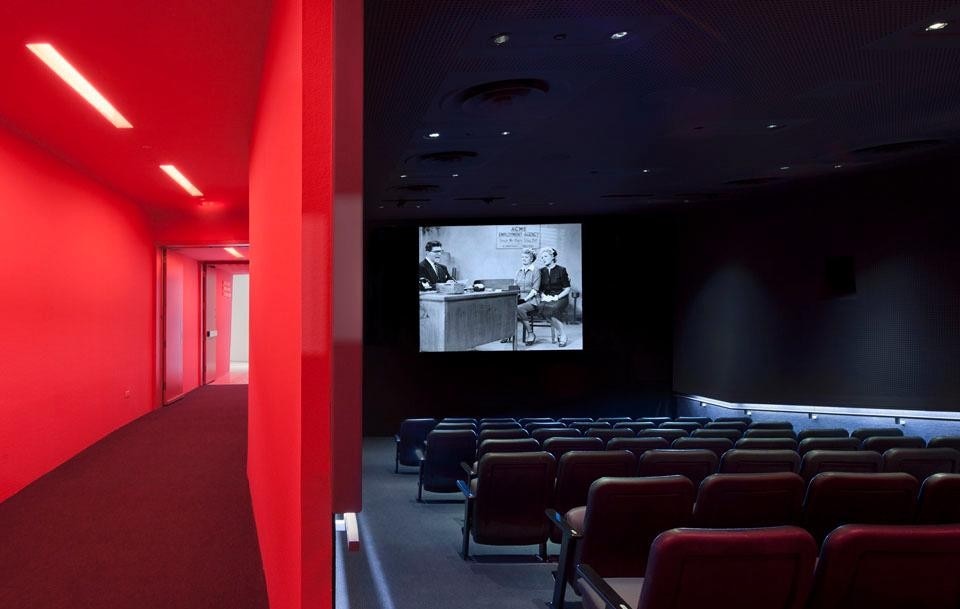When you enter the newly reopened museum, says Leeser, "you're entering an otherworldly realm—the realm of film." Located in the burgeoning neighborhood of Astoria, Queens, this project marks one of those rare occasions where a digital-inspired sci-fi aesthetic is truly appropriate. The original 1920s structure was built as a production studio for Paramount. Although its industrial affect fit naturally with the museum's "Behind the Screen" collection, it did little to connect the various film props, archival footage, vintage projectors, and other physical paraphernalia with the ephemeral artifice of the moving image to which they belonged.
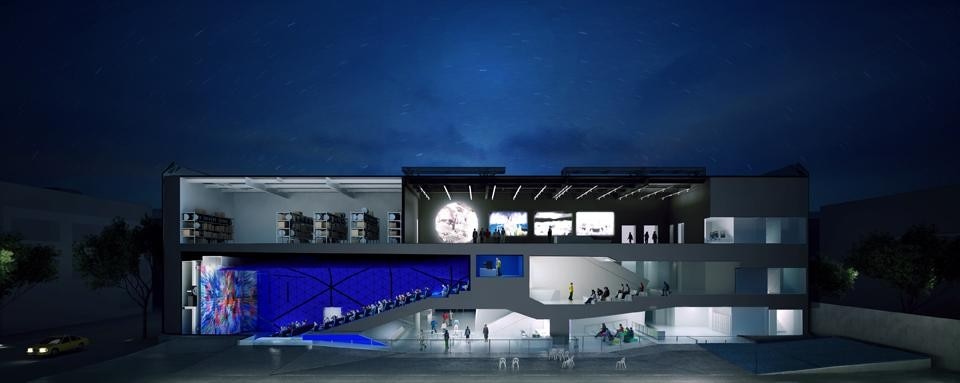
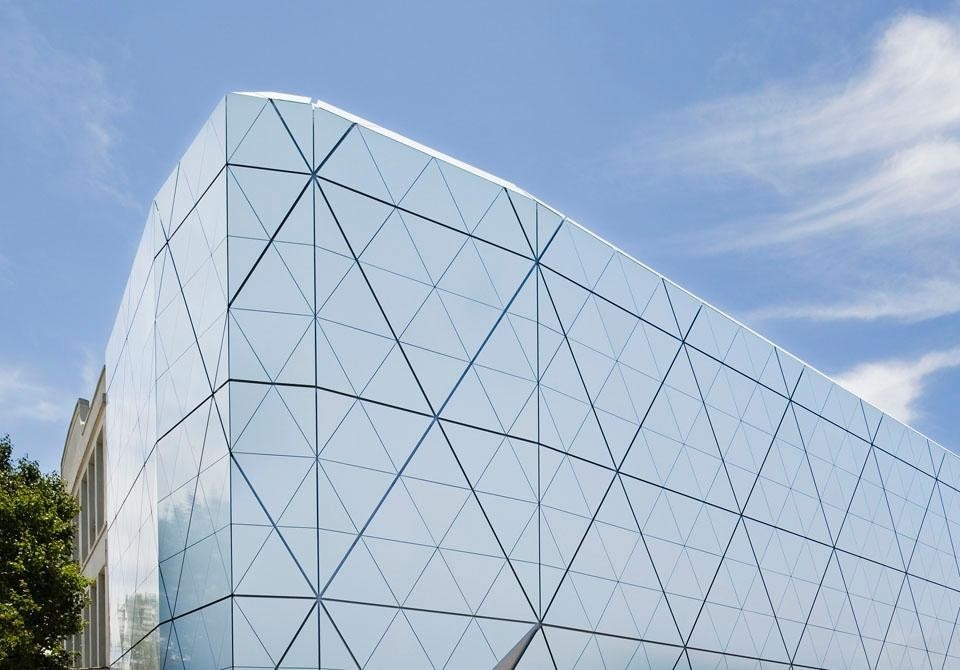
"Both architecture and film are about the choreography of movement and the experience of space," observes Leeser, who worked as a partner in Peter Eisenman's office prior to starting his own firm in 1989. The first screen that museum visitors are likely to encounter is the one they must cross through from the street. At the main entrance, the full-height glass storefront is patterned with opaque triangles and overlaid with pink-edged supergraphics bearing the institution's name. This translucent veil lies flush with the building's outer surface, in contrast to the deeply inset windows of the historic landmark façade.
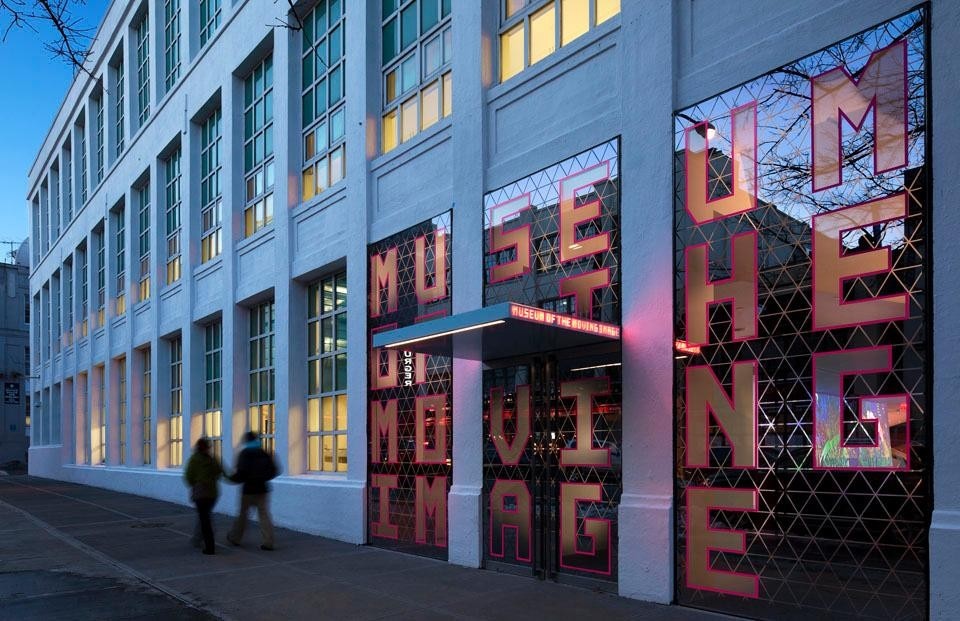
Pleasant daylight seeps in from the courtyard, but the lobby's spatial effects are most pronounced after dark. A sloping ceiling in the lobby traces the underside of the adjacent theater, forming a sharp crease where it meets the upward-sloping floor. The allure of this ethereal terrain, softly illuminated by recessed lighting, is not lost on youngsters, who dash eagerly along the incline. Luxuriously long, monolithic Corian benches and counters equip the ticket counter, shop, and café. Inside the 264-seat theater, blue felt walls and ceiling envelop the audience as in a capsule, ready to transport them to an alternate domain.
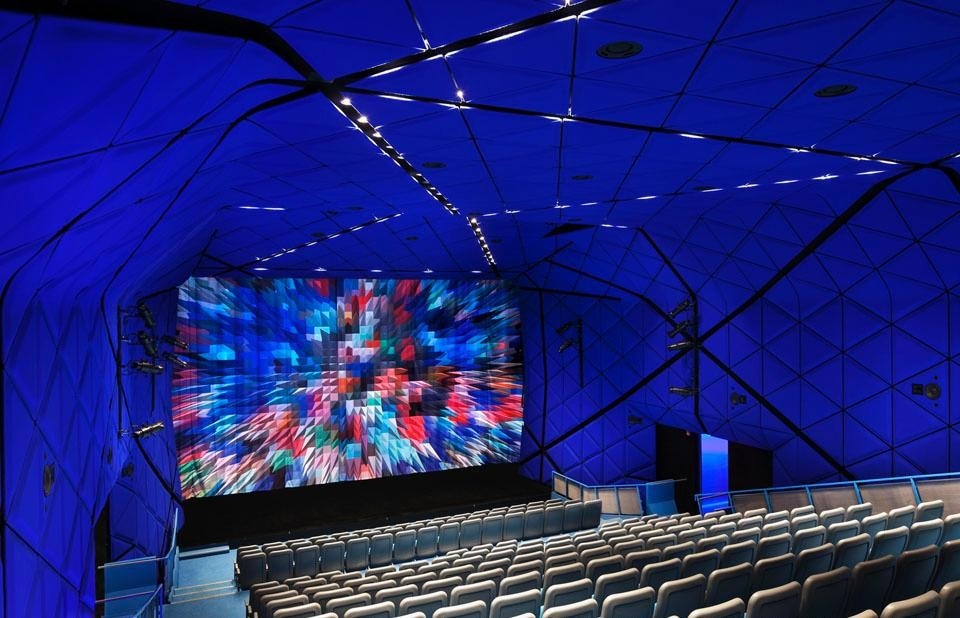
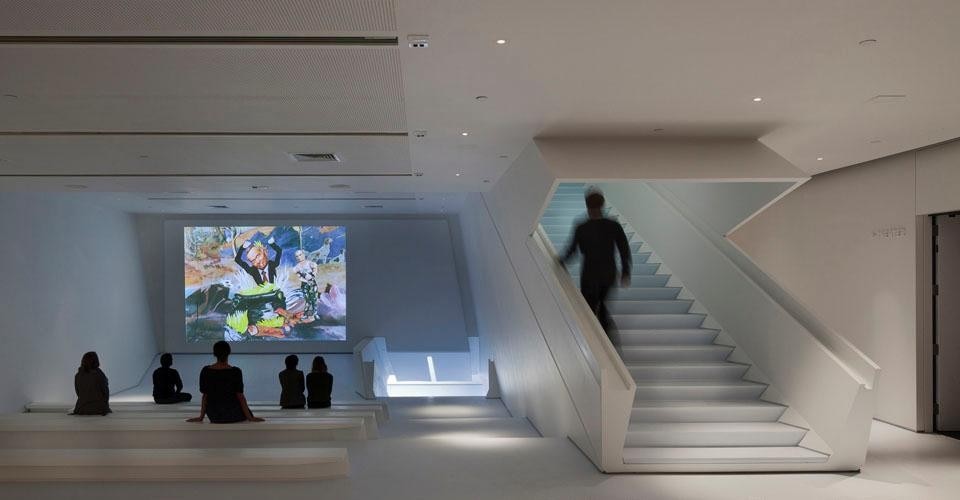
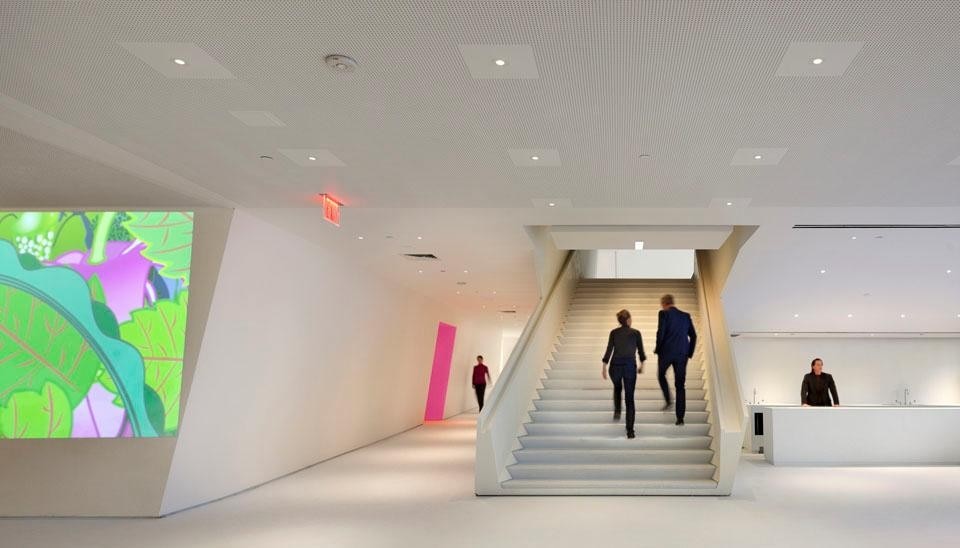
Museum Leadership: Rochelle Solvin, Director Herbert S. Schlosser, Chairman of the Board of Trustees
Architect: Thomas Leeser, Leeser Architecture
Project Manager: David Linehan
Design Team: Simon Arnold, Kate Burke, Sofia Castricone, Henry Grosman, Joseph Haberl
Museum Leadership: Rochelle Solvin, Director Herbert S. Schlosser, Chairman of the Board of Trustees
Current Museum Building: 50,000sq ft
Total New Contruction: 47,700sq ft
Indoor: 37,300sq ft
Budget: $67 million
